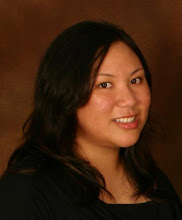For Ms. Bobbi's second observation, I was doing a lesson in Language Arts. We had just started a new lesson which meant new spelling words and new vocabulary. I started off giving them their spelling pretest and then we checked it together. Then we started on the vocabulary. Because it was March 17, Ms.
Corin had suggested I do something to tie in with St. Patrick's Day. I think vocabulary is a very important part of Language Arts and not just learning new words, but actually understanding them and using them. I had been researching effective ways to teach new vocabulary to students and came across a technique called Think-Pair-Share. I had heard of this technique but thought it was mainly for discussions. The idea is to get all students to think about the vocabulary word so they can talk about it with each other and with the rest of the class. It also helps to clarify misunderstandings about the meaning or usage of a word. I really do have a problem with getting everybody in the class to participate when discussing the new vocabulary words. I'll ask a question or ask for examples and it's usually the same handful of students answering me. With Think-Pair-Share, I would ask a question, the students would Think about it then get with a partner and share their thoughts. Then I would call on volunteers to tell me what they think. With this technique, students who don't know the answer or don't know what to think have a chance to get some input from their partner and will be ready to share once I call on them. Everyone will be ready and have a chance to participate.
I tried out the technique to review the previous week's vocabulary words. At first, it was hard for the students to resist shooting their hands in the air or calling out the answer as soon as I finished the question. I would just ignore those students and direct them to think silently and then share with a partner.
When we started on the new vocabulary words, I was confident to ask any student to give me an example or an idea because I knew they were discussing with their partner. Eventually, the students got used to Thinking and Sharing with a partner and the rest of the lesson went smoothly. To tie it in with St. Patrick's Day, I wanted to students to apply their new knowledge of the vocabulary words by writing a story. From what I had been reading on teaching vocabulary, it is a little unreasonable to expect students to be able to use vocabulary words right away with out more exposure to them. In this case, it was many of the students' first time to see these words. So I had them just write a story in groups using at least two vocabulary words.
We talked about the history of St. Patrick's Day and then I wrote out a story starter for them about finding the pot of gold.
The students were to work in groups to finish the story starter using at least two new vocabulary words. I told them if they were able to use more than two
correctly, I would "pay" them a dollar for each additional word. Initially, I wanted them to do circle writing, where each one of them would write part of the story and pass it on until the story was complete, but it didn't work out that way. However, the stories they came up with were pretty good and had very
imaginative uses of the vocabulary words. Take a look at their finished stories below.




.JPG)
.JPG)



















